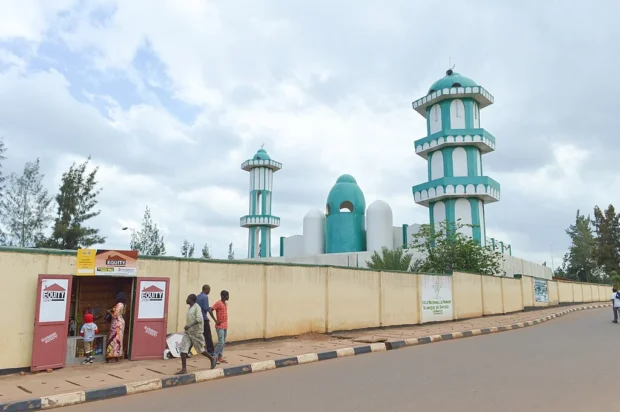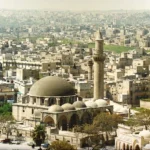Walking through Kigali, Rwanda’s capital, feels like stepping into a city that carefully balances the past and the present. The clean, green streets and friendly faces welcome you warmly. But Kigali is much more than just a neat city. It holds stories of resilience, art, and daily life that surprise many visitors. Whether you enjoy history, music, or food, Kigali offers moments that stay with you long after you leave. In this post, I share my personal reflections, practical tips, and some quirky facts that make Kigali truly special.
Table of Contents
City Landmarks and Quiet Corners
The heart of Kigali is both modern and full of meaning. One cannot miss the Kigali Genocide Memorial, a place that tells a difficult story with great respect and hope. Walking among the peaceful gardens and walls lined with names is a powerful experience. It reminds visitors of the past while inspiring a future built on unity.
Beyond the memorial, the city’s hills offer scenic views. I found myself wandering up to the hilltops around Kimihurura district. Here, the city stretches below like a calm mosaic of soft rooftops and trees. It’s a perfect spot to pause, breathe, and watch children play soccer in dusty fields.

For a less obvious delight, visit the Inema Arts Center. This place pulses with creativity. Local artists display colorful paintings and sculptures that speak about Rwanda’s culture and everyday life. The center often hosts live music sessions where drums and guitars bring the room alive, connecting tradition with contemporary rhythms.
Where to Stay in Kigali’s Welcoming Neighborhoods
Choosing where to stay depends on what you want to feel. Neighborhoods such as Nyarutarama and Kiyovu offer quiet streets lined with jacaranda trees and cozy cafés. Here, mornings begin with the aroma of fresh coffee and the sound of birds. These areas feel safe, walkable, and close enough to city attractions.
If you prefer to be closer to nightlife and markets, town center districts like Remera or Nyamirambo offer more energy. Nyamirambo is particularly interesting because of its lively streets and small shops selling colorful fabrics and spices. Staying here means waking up to the busy sounds of vendors and the smell of grilled meat from local eateries.

Tasting Kigali’s Flavors and Food Places
Food in Kigali tells a story beyond taste. A popular dish is “Isombe,” made from cassava leaves cooked with peanut butter and served with rice or plantains. I enjoyed it in a small restaurant in Nyamirambo, where the owner shared how this dish connects to Rwandan family traditions.
Don’t miss trying “Brochettes,” grilled meat skewers sold by street vendors and in small local restaurants. You can find these in the Kiyovu area, paired with fried potatoes and a light salad. The combination is simple but satisfying, perfect after a day of walking.
For breakfast, I often stopped at cafés serving “Ikawa,” Rwandan coffee. The coffee culture here is growing fast, with new cafés opening regularly. Each cup carries the richness of Rwanda’s famous coffee beans, grown in the volcanic soil surrounding the city.

Moving Around Kigali with Ease
Getting from Kigali International Airport to the city center is straightforward. There are shared minibuses that leave regularly, offering a chance to see neighborhoods as you travel. These buses are affordable and a good way to meet locals and ask questions about the city.
Within the city, minibuses and moto-taxis are common. The moto-taxis, motorcycles that carry one or two passengers, are quick and can thread through traffic easily. If you choose to use these, agree on the price before the ride. Walking is also pleasant in many parts, especially in green neighborhoods where the roads feel calm and safe.
Kigali’s Customs and Social Traditions
When meeting people in Kigali, greetings are important. It is polite to greet with a handshake and a smile. People often ask, “Amakuru?” which means “How are you?” Respond with kindness, and you’ll find conversations flow easily. Avoid speaking loudly or interrupting, as respect is highly valued here.

Visiting homes or markets, it’s customary to remove shoes if invited indoors. Gifts or small tokens of appreciation are welcomed but not expected. When eating, wait for the host to start before you begin. These simple gestures show respect and help you connect deeply with Rwandan culture.
Stories and Oddities You Might Not Notice
Kigali is full of little surprises. For example, the city does not have street names in the way many Western cities do. Instead, people give directions by landmarks and local knowledge. I once asked for directions and was told to “turn left after the big mango tree” or “walk past the bakery with the green door.” This way of navigating connects people and their environment closely.
Another curious fact: Kigali is one of the cleanest capitals in Africa. This is not by chance. Every Saturday morning, many residents take part in “Umuganda,” a community cleanup day. Streets are swept, trash removed, and small repairs made. I joined once and felt a strong sense of community pride.

Music lovers will appreciate that Kigali hosts regular traditional dance and drum performances. These events are more than entertainment-they carry stories and rituals from Rwanda’s past. A friend introduced me to a group of performers who explained that each drum beat represents different messages or emotions.
Final Thoughts on Kigali’s Warm Spirit
Leaving Kigali, I felt as if I had glimpsed a city that is quietly growing with hope. Its blend of old and new, the openness of its people, and the colors of its art and food create a memorable experience. Kigali invites curiosity and care, showing that travel is not just about places but about understanding and respect.
Whether you walk under jacaranda trees, share a meal with neighbors, or listen to the distant drumbeats, Kigali offers moments that gently stay in your heart. It is a city where every corner has a story, waiting to be told.

Traveler exploring cultural intersections, sharing reflections on similarities and differences between traditions, lifestyles, and food.
- Rwanda-kigali-cleanest-city by Niysam on Wikimedia Commons – cc by-sa 4.0
- RW Kigali (67) (17073007580) by Diego Tirira from Quito, Ecuador on Wikimedia Commons – cc by-sa 2.0
- מראה כללי של קיגאלי בירת רואנדה 09 by Hanay on Wikimedia Commons – cc by-sa 3.0
- השוק המרכזי קימירונקו בקיגאלי בירת רואנדה (5) by Hanay on Wikimedia Commons – cc by-sa 3.0
- Inyubako yuwahoze ari perezida by Muhirehussein12 on Wikimedia Commons – cc by-sa 4.0
